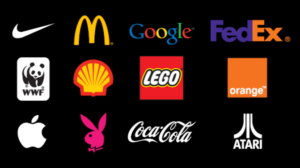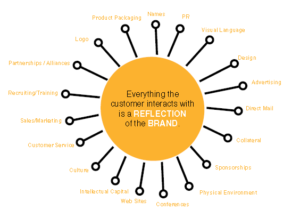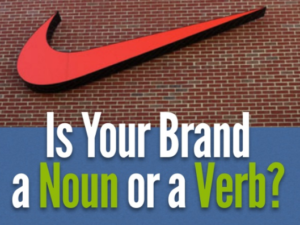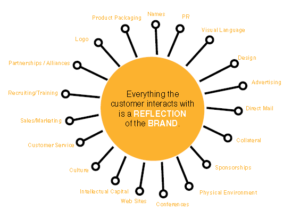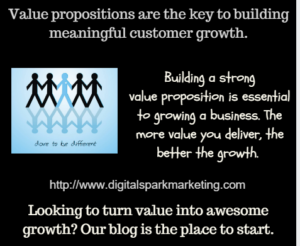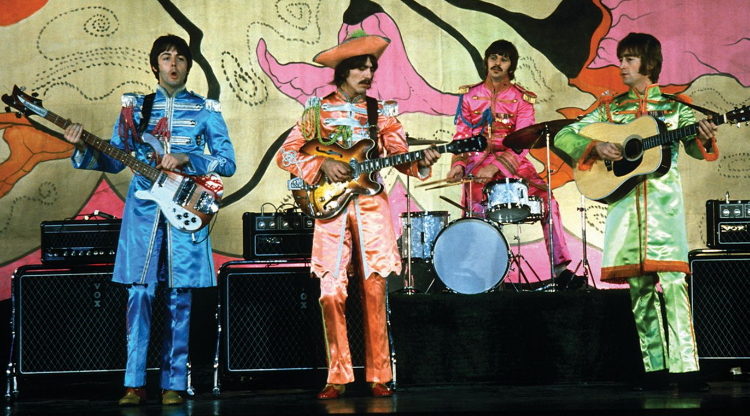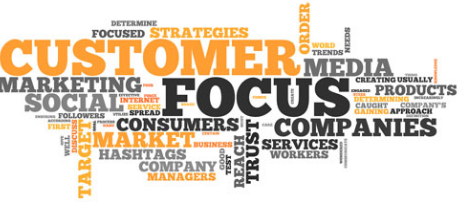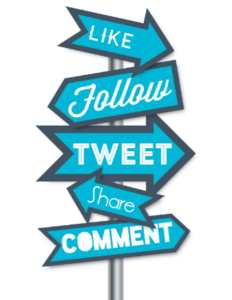As marketing types, we confess to having a visual bias when it comes to the expression of creative branding. We tend to experience a brand primarily through our eyes, by watching how it draws us into its world. And when we’re working with clients on building brand projects, one of our first steps is to create a book of selected pictures and graphics that create a feeling of the brand’s character.
Check out our thoughts on creative marketing.
Do you express feelings and emotions often with your customers? Are you aware of the ways you can influence brand attention? Well, remember this: the more feelings and emotions you express, the more attention to your brand. And the more influence it can create. Not rocket science is it? But without it, you will be losing attention to your brand.
Related post: Walmart E-commerce Strategy … 6 Reasons Why It Won’t Beat Amazon
As long as it’s positive, there is no such thing as too much brand attention. If you play your cards right, you can roll all of that great attention into growth for your company.
The front line of any brand in the marketplace is not the advertising, packaging, or product design. It is the interaction that the customer experiences that determine the brand’s reputation to a large degree.
It is human and emotional, and at that critical time when a customer engages with one of your employees or someone in your channel, or even one of your products, your brand will either be enhanced or diminished.
Let’s dig further into this important marketing topic.

Importance of branding
One of the truths of modern business is that there is almost nothing that your competitors can’t duplicate in a matter of weeks or months. If you have a great idea, you can be certain that somebody will copy it before long.
And not only will they follow your lead, but they may also be able to do a better job or sell the product or service at a lower price. The question then becomes, “What competitive edge do I have to offer that cannot be copied by anyone else?
The answer? Your business brand identity.
No branding, no long-term differentiation. No differentiation, no long-term profitability. Brands can activate a passionate group of people to do something like embrace an important community issue. Products or services can’t do that.
Most brands sell products or services. GM sells cars. Amazon sells books. Real estate brokerages sell homes. Killer brands, however, satisfy the desire to get at the emotional heart of the matter.
Let’s review five killer brands and what they stand for. This is the best way to appreciate the importance of branding, emotion, and most importantly, brand identity.
Check out these examples: My Favorite Brands and Why I Like Them So Much
JetBlue
JetBlue’s brand success centers on the achievable – the simple things – they knew would make a difference for their guests. This set the stage for direct TV and XM radio, the provision of first-class seats to everyone, more legroom, great snacks, and high-end service at lower-end pricing. No other airline others these value propositions. They are different, and their brand stands out because it represents those differences.
Simple. Attainable. Targeted. They deliver.
Nike
Ask anyone who works in marketing what Nike stands for, and you’re likely to hear the same three words: “authentic athletic performance.” Their goal is to be associated with customers that desire to be high-performance, high-notch athletes, achievers, and winners. Nike is the name of the winged Greek goddess of victory, and the logo represents the spirit of this goddess. It is wrapped in emotional appeal.
Zappos
They don’t sell shoes. They deliver that extra dose of love we all need from time to time. There is no secret here. Zappos became Zappos because of the fanatical customer support offered.
That is the company’s brand. As Tony Hsieh, the Zappos CEO, puts it, back in 2003, we thought of ourselves as a shoe company that offered great service. Today, we think the Zappos brand is about great service, and we just happen to sell shoes.
Ritz Carlton
Ritz Carlton’s desire is to create guests for life. The brand desires to represent stories of extraordinary service and random acts of kindness. Ritz Carlton focuses their attention on impeccable service standards to separate itself from other hotels. What Ritz-Carlton has done so well is operationalize it so that culture and brand are one. Much like what Zappos has done.
FedEx
Simply put, the FedEx brand is synonymous with “reliability.” Define your benefit to customers in the most straightforward terms possible. If your promise is reliability, then you need to offer reliability in everything you do — from your products and services to your website and communications. Peace of mind. FedEx famously built its brand around a singular idea: by coming through when something
“absolutely, positively has to be there overnight.”
So is this what killer branding is all about for companies?
We think so. Not just about business … make it personal for customers. A great way to stand out.

How Creative Branding Helps Marketing
So what are some of the best ways different businesses use their creative branding to market their products and services? Let’s take a close look at some of the best uses of branding forces:
Differentiation
There is no more powerful component of a brand’s force than its differentiation. JetBlue’s brand screams out how it is different. And better. Free Direct TV and XM satellite radio on board their aircraft. Leather seats. Unlimited snacks. Great legroom. Think of these discriminators, and you’ll think of the JetBlue brand.
Unique positioning
Businesses should always be looking to reinforce their unique positioning. Like Best Buy and its employee expertise in home electronics. They have continued to strengthen this unique positioning with their Geek Squad and Tweep Force.
Positive experience
The Starbucks experience. Certainly, defines a positive brand feeling for its target customers. Unique products. Unique store atmosphere. Experiences to stimulate all the senses … visual, hearing, aroma, taste, and touch.
Unforgettable
Have you ever been to a Whole Foods store? Not your average presentation style of culinary products. Helping customers visualize the full store and product experience. And taking grocery shopping to an interactive and collaborative new level. Unique and unforgettable. No wonder more top-of-the-line grocery chains have been quickly following Whole Foods’ lead.
Positive image
Create positive mental images? In our opinion, no one is better at this than Zappos, the online shoe and clothing retailer. Focused on delivering happiness and being the best in the business in customer service. Lots of use of surprising customers with random acts of kindness and special service.
Communications
A brand communicates every time it touches the customer … the moment of truth. It communicates with words, stories, emotions, and its personality. Yes, it’s personality. Marketing needs to manage all of these communications, making marketing responsible for each ˜moment of truth”.
We include everyone in the marketing realm. No one does more of this communication management or does it better than Google. They live and breathe their personality.
Immersion
Customer immersion in the products and services. Disney World is certainly very good at customer immersion in its entertainment themes. Bass Pro Shop is very good at immersion in its products by setting up areas around its stores where customers can go and try their skills with these Bass Pro Shop products. A unique branding style.
Giving back
As Ben Cohen of Ben and Jerry’s Ice Cream brand puts it: “There is a spiritual aspect to our lives, when we give we receive. When a business does something good for somebody, that somebody feels good about them.” And that emotion reflects positively on the brand.

Building a brand … making your brand stand out
Be useful or entertaining … or be ignored.
We focus on five areas to make a brand stand out … just 5. Think about these areas for your brand.
Distinctive voice
When we’re working with clients on a creative branding project, one of our first steps is to create a book of selected pictures and graphics that create a feeling of the brand’s character.
The next step though is the expression of the brand through words. The message, we feel, is just as crucial and maybe more so.
Taco Bell isn’t a luxurious brand, and it doesn’t pretend to be. Instead, the brand’s voice is one of a trusted friend that will never fail to make you laugh. Just look at their sauce packets, which feature unique messages that have diners staring at their condiments for far longer than normal.
Fun phrases such as, “Pick me!” and “Will you marry me?” manage to bring humor into the fast-food experience, and their Twitter account carries that same fun-loving attitude — even when their customers complain.
The account doesn’t feign pretentiousness, and by having a genuine brand voice, Taco Bell adds a human side to its marketing.
When you tell your creative branding story, create a distinctive voice with unique images … dare to create different feelings and emotions with your communities.
Reflect Your Culture
The front line of any brand in the marketplace is not the advertising, packaging, or product design. It is the interaction that the customer experiences that determine the brand’s reputation. It is human and emotional, and at that critical time when a customer engages with one of your employees or someone in your channel, your brand (your product and reputation) will either be enhanced or diminished. Who does it the best? We would say Zappos.
Here is a great example … of how Zappos uses the element of surprise so effectively. Note this story is told by the customer:
When I came home this last time, I had an email from Zappos asking about the (returned) shoes, since they hadn’t received them. I was just back and not ready to deal with that, so I replied that my mom had died but that I’d send the shoes as soon as I could. They emailed back that they had arranged with UPS to pick up the shoes, so I wouldn’t have to take the time to do it myself. I was so touched. That’s not the company practice.
Yesterday, when I came home from town, a florist delivery man was just leaving. It was a beautiful arrangement in a basket with white lilies and roses and carnations. Big and lush and fragrant, I opened the card, and it was from Zappos. I burst into tears. I’m a sucker for kindness, and if that isn’t one of the nicest things I’ve ever had to happen to me, I don’t know what is.
Those kinds of examples are justified by almost any cost, and the cost hit Zappos takes by doing this is paid back multiple times over by the customer loyalty they generate from making people happy.
Customers crave a consistent brand experience
Much like the user-friendly and intuitive interface enjoyed on Apple devices, the clean Apple Store design makes the space easy for consumers to navigate and find what they need. From the employee enthusiasm that welcomes you into a store to innovations like geek chic gadgetry, the first-of-its-kind Genius Bar for technical support, and even a cash register-less check out—all of these factors work in unison to deliver an on-brand consumer experience.
The ultimate lesson: Invest in quality internal communications and inspired brand training for your teams. Your employees are the advocates who keep the brand promises you make and deliver the consumer experience a brand needs to thrive. Take advantage of what your competition forgets. Repeat after me: “culture and brand go hand in hand.”
Customer personalization
Explore the use of customer personalization to create WOW from your customers to create a stronger market branding.
Have you ever used customer personalization to improve the experiences your customers receive from your business? If so, have you noticed its impact on your market branding? The process of personalization is amazingly powerful:
In a study published in the Journal of Applied Social Psychology, researchers tested the effects that mints had on a control group (where no mints were given) to measure their effectiveness in increasing tips (think of tips as a measure of great customer experience).
The results were surprising, to say the least:
The first group studied had waiters giving mints along with the check, making no mention of the mints themselves. This increased tips by around 3% against the control group.
The second group had waiters bring out two mints by hand (separate from the check), and they mentioned them to the table (i.e., ‘Would anyone like some mints before they leave?’). This saw tips increase by about 14% against the control group.
The last group had waiters bring out the check first along with a few mints. A short time afterward, the waiters came back with another set of mints and let customers know they had brought out more mints, in case they wanted another.
That last group is where waiters saw a 21% increase in tips. They still were bringing out only two mints.
The researchers found that it was the perceived personalization of bringing out the second set of mints and mentioning it to customers (Hey, I thought I might see if all of you are satisfied or if someone could use an extra mint.) that made the difference.
Our takeaway:
It wasn’t the mints; it was the personalized experience that they created. It made it clear to customers that the waiter was thinking of them.
Be sure to incorporate this into your offering: How can you follow up with customers in a personalized manner with free support, training, or reward for trying out your product or service?
Need some help in capturing more customers from your branding design strategies? Such as creative branding ideas to help the differentiation with potential customers?
Are you devoting enough energy to improving your continuous learning for yourself and your team?
Do you have a lesson about making your brand marketing better you can share with this community? Have any questions or comments to add in the section below?
Mike Schoultz is the founder of Digital Spark Marketing, a digital marketing and customer service agency. With 40 years of business experience, he blogs on topics that relate to improving the performance of your business. Find them on G+, Twitter, and LinkedIn.
Digital Spark Marketing will stretch your thinking and your ability to adapt to change. We also provide some fun and inspiration along the way.
More reading on brands and branding from Digital Spark Marketing’s Library:
New York Yankees … 11 Awesome Lessons From Yankees Brand
Building a Brand … A How-to Guide for Small Business
6 Favorite Brands and Why I Like Them So Much
Like this short blog? Follow Digital Spark Marketing on LinkedIn or add us to your circles for 3-4 short, interesting blogs, stories per week.

